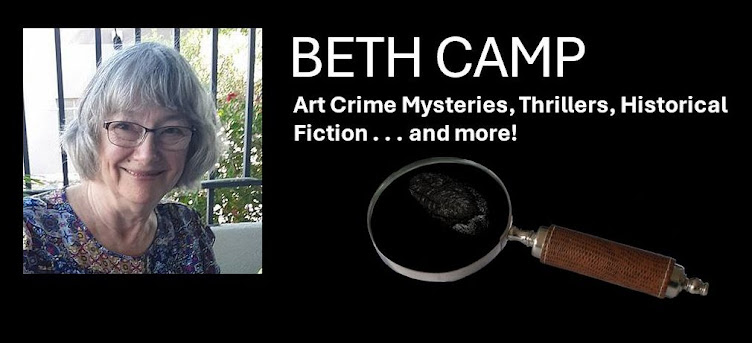My goal is to identify a research base to improve teaching with technology and teaching online. This first article is by Gordon Hensley. "Creating a Hybrid College Course: Instructional Design Notes and Recommendations for Beginners" at http://jolt.merlot.org/vol1_no2_hensley.htm
Gordon Hensley, Assistant Professor of Theater and Dance, Appalachian State University, Boone, NC 28607 hensleyg@appstate.edu
Abstract. This case study briefly explores the steps taken in creating a hybrid college course at Appalachian State University. To solve problems created by limited space, a hybrid course was created. The fifty-student course was created and taught in person several times. The remainder of student interaction was orchestrated online using WebCT. The course content was compiled into four modules consisting of information and presentations. These modules were given to students on CD-ROM. In the end, the class had almost identical pass and drop rates as that of a face-to-face course. The instructor comments on the course and concludes with specific lists of suggestions on course design, interaction/collaboration, technology, assessment, and learner support. The article offers a synopsis, project results, and recommendations for others interested in hybrid learning.
NOTE: What I like best about this comparative analysis is the list of very practical applications and the extensive bibliography. Hensley notes:
Course design and content
Note in the published class listing that the class is a hybrid, and list the required meeting dates and times
Write objectives/learning outcomes at the appropriate language level
Clearly convey objectives/learning outcomes in the syllabus and in each module
Make content available to students in manageable segments (modules)
Present the content in a logical, sequential manner
Make content available internally (CDROM) and externally (Internet)
Enhance content with technology and WebCT, Blackboard, etc. tools
Utilize visual and auditory stimuli, like songs, video clips, and recorded narration
Make ancillary resources available Online or at a mutually convenient location (library)
Create the content so it is as demanding as face-to-face time (include reading, research, review, learning new concepts, and assessment)
Invite students to participate in mid-semester and final course evaluation
Address accessibility issues from the start, color choices for example—not everyone can see all colors you use in course materials. Materials can be evaluated for accessibility at www.webxact.watchfire.com/
Interaction/collaboration
Clarify expectations of student participation
Indicate instructor response time on personal messages and grading assignments
Deliberately attempt to make a learning community via group projects and activities
Use collaborative tools such as discussion boards, chat rooms, instant messenger, Email, student web pages, etc. Participation in these areas should be evaluated in some way (number of posts, attendance in chat, comments made, etc. WebCT has a tracking tool for this.)
Technology
Enable analysis and reflection of content
Use communication tools to elaborate on course content, like Trillian messenger (available at http://www.ceruleanstudios.com/).
Require technology in assignments and explain how to use the technology
Use technology is for a purpose, not just for show
Consider student connectivity issues – make content available in different formats, and on a CDROM
Try to be creative in the use of multiple technologies together
Assessment
Create assignments that encourage students to think critically, not just to use rote memorization
Align assignments with stated course objectives
Provide opportunities for students to apply concepts and skills they have learned
Create a use for external resources such as printed materials and the Internet
Clearly communicate the assignments with very specific length requirements, formatting style, etc.
Direct students to specific web sites to use, and sites to not use
Use built-in quiz features that are tied to course objectives
Provide the opportunity for self-assessment
Learner Support
Email students regular reminders and expectations before the class begins
Link to tutorials on applications such as Email, using the Internet, etc.
Link to resources for writing, grammar, etc.
Link to the instructor, to the school’s help desk, and to WebCT’s help page
Link to tools required for the course such as plug-ins
Make your contact information and communication means clear on all materials
References
Cerniglia, Connie. “Hybrid Instruction Soars at Guilford Technical Community College.” Creating a Virtual Learning Community. 4.2 (Winter 2002-03): 2-3.
“Compensating Faculty for Online Instruction.” Academic Leader. 18.9 (September 2002): 7
Garnham, Carla, and Robert Kaleta. “Introduction to Hybrid Courses.” Teaching with Technology Today. University of Wisconsin-Milwaukee. 8.6. March 20, 2002. http://www.uwsa.edu/ttt/articles/garnham.htm October 28, 2002
“Guide #9: Distance Education: Research.” Distance Education at a Glance. Engineering Outreach. University of Idaho. June 10, 2001. http://www.uidaho.edu/eo/dist9.html February 3, 2003.
“Guide #2: Strategies for Teaching at a Distance.” Distance Education at a Glance. Engineering Outreach. University of Idaho. June 10, 2001. http://www.uidaho.edu/eo/dist2.html February 3, 2003.
“Hybrid Courses Advantages.” Hybrid Course Web Site. University of Wisconsin- Milwaukee. http://www.uwm.edu/Dept/LTC/hybrid-courses-advantages.html October 28, 2002
Sands, Peter. “Inside Outside, Upside Downside: Strategies for Connecting Online and Face-to-Face Instruction in Hybrid Courses.” Teaching with Technology Today. University of Wisconsin-Milwaukee. 8.6. March 20, 2002. http://www.uwsa.edu/ttt/articles/sands2.htm October 28, 2002
Spilka, Rachel. “Approximately ‘Real World’ Learning with the Hybrid Model.” Teaching with Technology Today. University of Wisconsin-Milwaukee. 8.6. March 20, 2002. http://www.uwsa.edu/ttt/articles/spilka.htm October 28, 2002
Young, Jeffrey. “Hybrid Teaching Seeks to End Divide between Traditional and Online Instruction.” The Chronicle of Higher Education. March 22, 2002. http://chronicle.com/free/v48/I28/28a03301.htm October 28, 2002
Distributed Learning Impact Evaluation. University of Central Florida. 2005. http://pegasus.cc.ucf.edu/~rite/impactevaluation.htm. November 4, 2005
